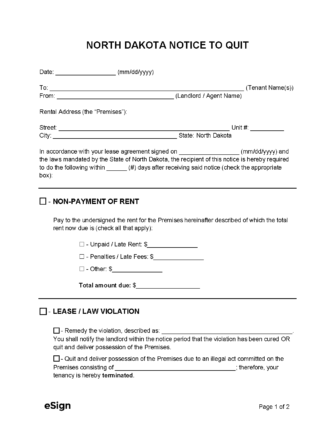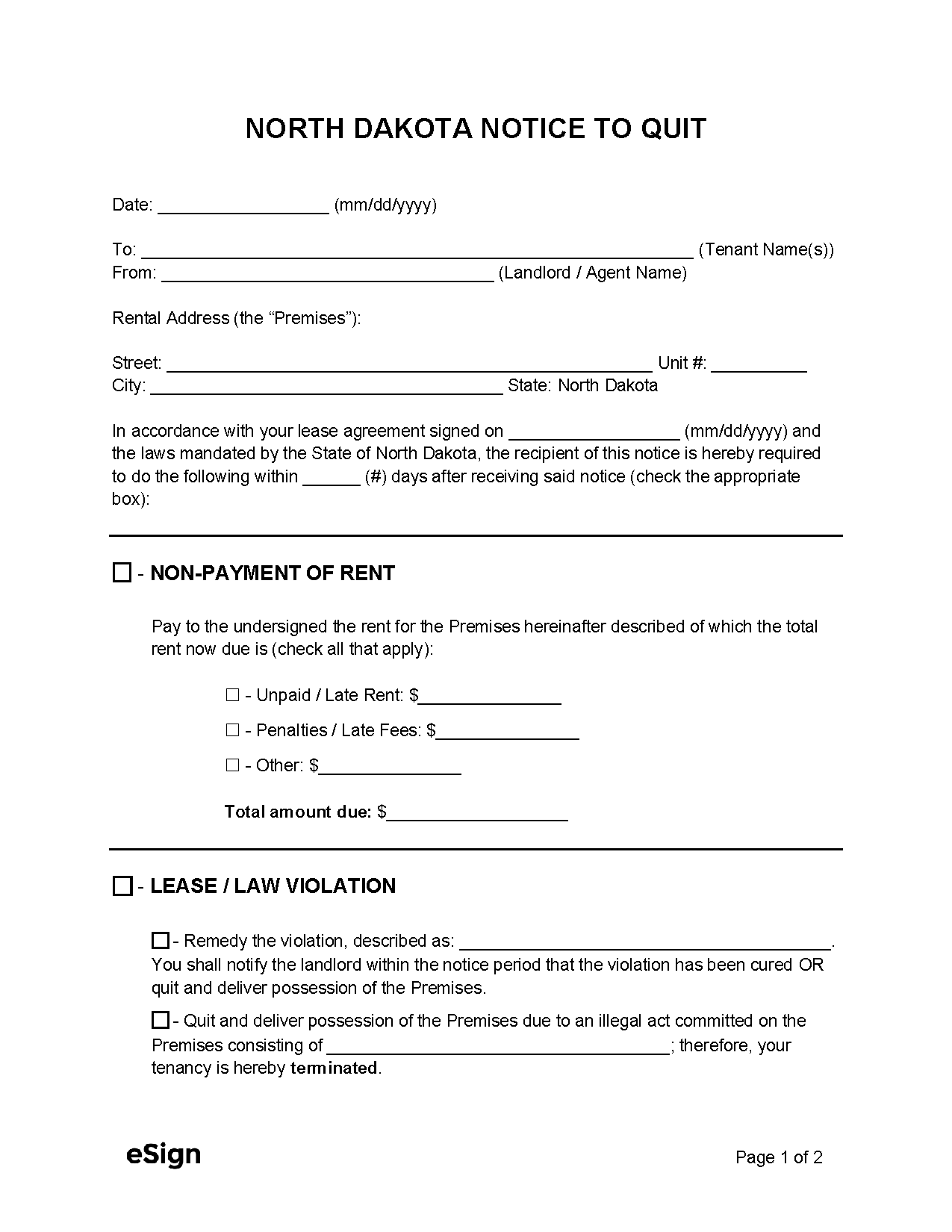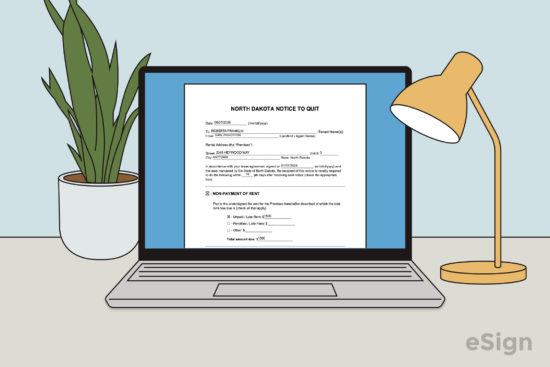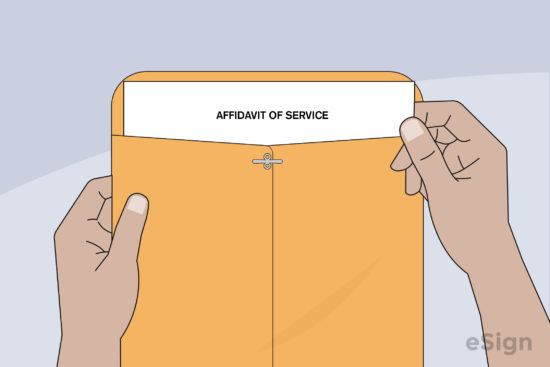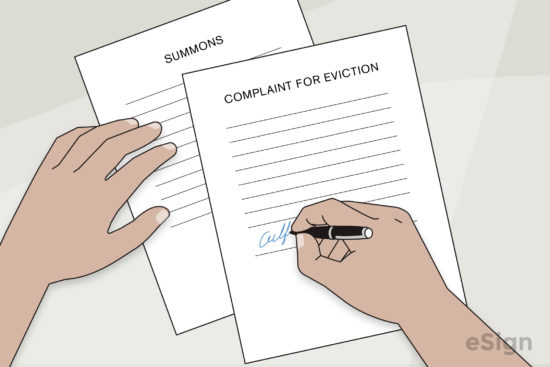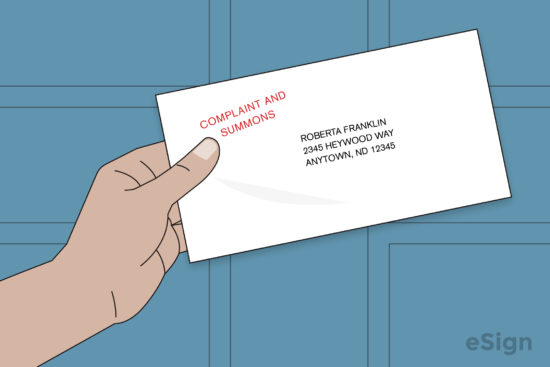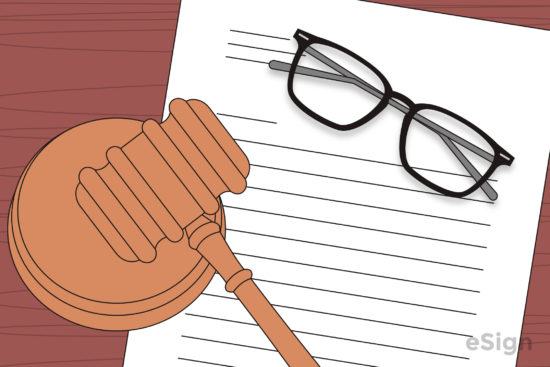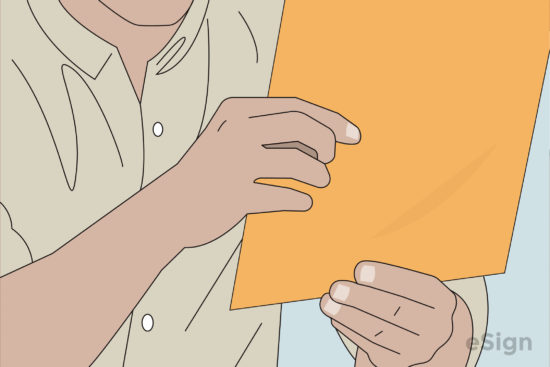Eviction Notices: By Type (3)
 3-Day Notice to Quit | Non-Payment – Informs a tenant that they have three days to pay overdue rent or move out. 3-Day Notice to Quit | Non-Payment – Informs a tenant that they have three days to pay overdue rent or move out.
Download: PDF |
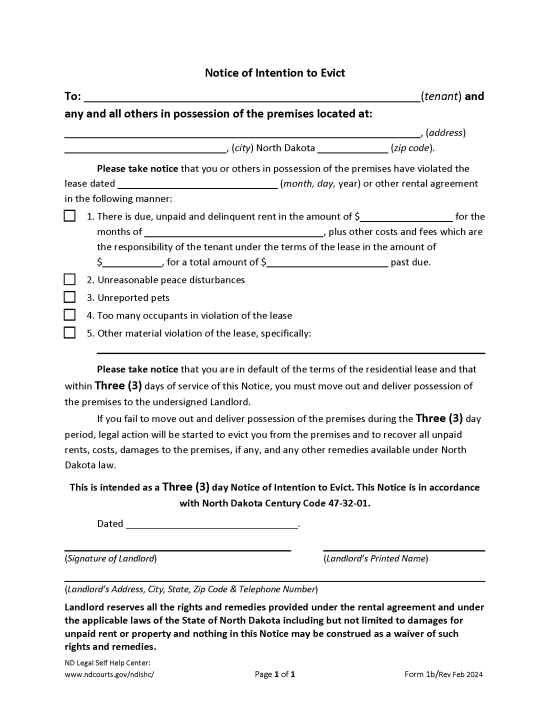 3-Day Notice to Quit | Non-Compliance – Requires that a tenant vacate the premises following a lease violation. 3-Day Notice to Quit | Non-Compliance – Requires that a tenant vacate the premises following a lease violation.
Download: PDF |
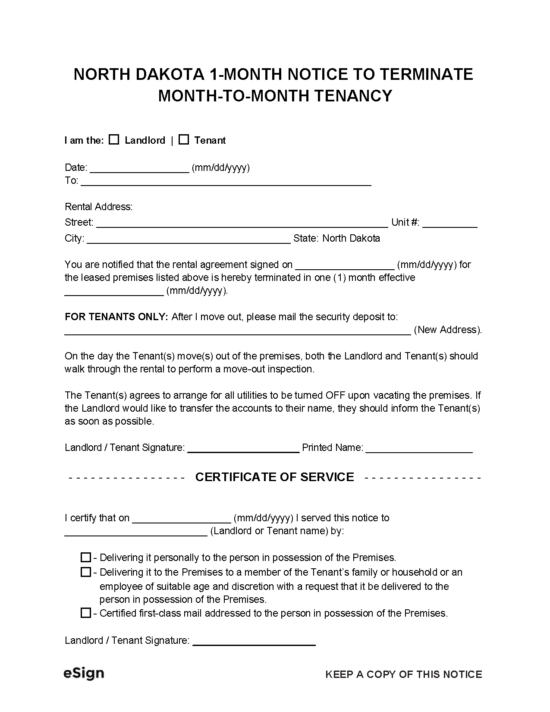 1-Month Notice to Terminate | Month-to-Month Lease – Notice of a tenant or landlord’s intent to end a monthly tenancy. 1-Month Notice to Terminate | Month-to-Month Lease – Notice of a tenant or landlord’s intent to end a monthly tenancy.
Download: PDF, Word (.docx), OpenDocument |
Notice Requirements
How to Evict a Tenant in North Dakota
Step 1 – Complete Notice to Quit
North Dakota law requires that the landlord serve a notice of intention to evict before beginning the eviction process. If the notice is for non-payment, the tenant can pay the amount owing to stay on the property.
Step 2 – Deliver the Notice to the Tenant
The landlord must provide the notice to a sheriff or another person over 18 who is not involved with the case. The delivering party will serve the notice on the tenant personally or, if unsuccessful, by posting it on the property.
If served by a sheriff, they will provide the landlord a certificate of service. If served by another party, they must complete and provide the landlord a Declaration of Service by Personal Delivery.
Step 3 – File Eviction Complaint
Once the notice deadline has passed and the tenant has not complied, the landlord can prepare and file the below documents with the District Court that has jurisdiction over the property.
- Complaint
- Summons
- Findings of Fact, Conclusions of Law, Order
- Judgment
- Writ of Eviction
- Statement of Costs and Disbursements
- Copy of the lease
- Copy of notice to quit and proof of service
After filing, the court clerk will set a hearing date which will be indicated on the Summons.
Step 4 – Serve Documents
The landlord must arrange to have the Summons and Complaint served on the tenant in the same manner as the notice of intention (at least three days before the hearing). The forms must be served at least three days before the hearing.
Another proof of service will need to be filed with the court before the hearing.
Step 5 – Attend Hearing
At the hearing, the parties will present their evidence and the judge will weigh both sides of the case. If the landlord wins, the judge will order an eviction and set a deadline by which the tenant must move out.
If the landlord requested a money judgment in the Complaint, the court will order the tenant to pay overdue rent, legal fees, or damages.
Step 6 – Writ of Eviction
If the tenant does not move out by the date set by the judge, the Writ of Eviction will take effect and the sheriff will remove the tenant from the landlord’s property.
Court Forms + Resources
Forms
- Complaint
- Signed by: Landlord
- Declaration of Service by Personal Delivery
- Signed by: Server
- Findings of Fact, Conclusions of Law, Order
- Signed by: Judge
- Judgment
- Signed by: Court Clerk
- Summons
- Signed by: Landlord
- Statement of Costs & Disbursements
- Signed by: Landlord, Court Clerk
- Writ of Eviction
- Signed by: Court Clerk
Resources
